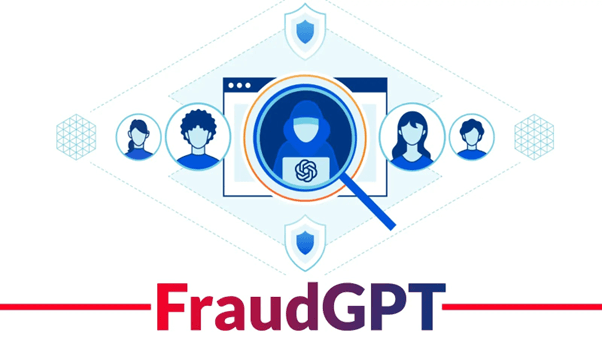The 5 Most Anticipated Cybersecurity Trends for the Year Ahead

Our world is more digitally intertwined than ever and while it undoubtedly has made running your business much more efficient, it can also be a two-way street. As we stay connected and tap into technology innovation for its many benefits, we must beware that you can unintentionally open the door to a host of cyber threats.
It’s no secret that cybercrime has been persistent and unwavering. Top of the list of crime types by victim count is phishing, with 300,497 victims in 2022. We also see an increase in things like personal data breaches, extortion, identity theft, and more. In response, many emerging cybersecurity trends have started to gain traction to tackle these diligent threats.
Here are few of the most anticipated cybersecurity trends –and threats to keep your eyes on in 2024.
Cybersecurity Trend 1: Combating FraudGPT & Cyber Attacks that use Generative AI
While we’re just scratching the surface using generative artificial intelligence (AI) to benefit business, cybercriminals too are leveraging this emerging technology to conduct sophisticated phishing attacks. As part of cybersecurity training exercises, we’re taught to look for poor use of the English language; now cybercriminals are leveraging AI to write perfect phishing emails, create modern graphic design and even using deepfake technology, making attacks that much harder to detect.
FraudGPT is a generative AI product sold on the dark web that hackers are using to carry out these modern cyberattacks. The difference between FraudGPT and ChatGPT is that FraudGPT doesn’t have the built-in controls and limitations that prevent ChatGPT from doing or answering inappropriate requests.
The good news is that cybersecurity experts are too leveraging AI to stay one step ahead of the attackers.
AI-powered solutions can sift through vast amounts of data to identify abnormal behavior and detect malicious activity, such as a new zero-day attack. AI can also automate many security processes, such as patch management, making staying on top of your cyber security needs easier.
Microsoft Defender, for instance, can secure your Microsoft-related software against things like phishing, ransomware, and compromised email through incident-based detections, AI detection, and a preventative multi-layered protection stack.
Cybersecurity Trend 2: Increased Use of Endpoint Detection and Response (EDR) Solutions
In a world where there are more and more endpoints accessing your corporate data, endpoint detection and response (EDR) solutions are increasingly more important to combat attacks. EDR is designed to combine real-time continuous monitoring and collection of endpoint data with rules-based automated response and analysis capabilities. Security experts can prioritize alerts effectively, gain visibility into the full scope of a breach, and take response actions to remediate threats.
Once suspicious activity is detected, the EDR system responds to quarantine the device that is at risk from the rest of the network while the incident is investigated. Especially for small businesses that often lack the IT resources that a larger corporation may have in place, this cybersecurity trend is no short of revolutionary.
As remote work has become a norm among many startups and small businesses, employees are no longer protected behind an office firewall creating a security gap in the old way of doing things. Remote work has created a bigger need to secure devices connected to the business network from a variety of locations. Cybercriminals are constantly searching for cracks and weaknesses in digital walls to exploit, which is why EDR is on the rise.
EDR solutions can provide full protection across all endpoints, monitoring, logging, and analyzing data for each device. If it suspects any seedy behavior, it can raise alarms or automatically neutralize the threat itself.
Talk to your IT provider to make sure you have EDR implemented at your organization, otherwise your remote workers may be at risk.
Cybersecurity Trend 3: Challenges to Obtain Cyber Insurance for Business
Getting cyber insurance for your business is becoming increasingly challenging due to the sheer amount of attacks happening today. Cyber insurers don’t want to risk insuring a business that doesn’t have proper cybersecurity measures in place. If a business has weak defenses, it’s more likely to be successfully attacked, which would lead to an insurance payout.
When filling out your cyber insurance application, you can expect to see a multi page questionnaire from the insurance company asking all sorts of technical questions – do employees have remote access to systems? do you use a PAM system? who’s your EDR provider? do you have immutable backups? The list goes on. If the answer is no to any of these questions, your chances of getting approved for coverage are slim to none.
While it’s tempting to just check off a box, this can cause major problems for you down the road should you get audited to find out you’ve committed insurance fraud.
Work with your managed IT provider or cybersecurity consultant to ensure your security practices are up to par so when it’s time to renew your cyber insurance premium, you get approved with flying colors.
Cybersecurity Trend 4: The Shift Toward Biometric Security Measures
Throughout the years, we’ve been instructed to improve our password security – making sure they have special characters, they are a certain length, and don’t contain any personal information. But passwords have become increasingly outdated as a primary security measure.
Measures like multi-factor authentication (MFA) have become commonplace, and more recently, biometric security is taking it up a notch. Biometric security uses physical or behavioral attributes like facial recognition, fingerprints, and more to verify someone’s identity. As they’re unique to each individual, they’re very difficult to replicate.
Since Apple introduced its facial recognition feature, many apps in the ecosystem have employed it to enhance user safety. Microsoft 365, for example, offers Windows Hello, a biometric sign-in system that turns a fingerprint or face into a digital password.
Biometric scans are a lot faster than typing in a password, fumbling for a key, or entering a PIN, making security much more convenient to your end users. Biometric security also eliminates the need to remember multiple strong passwords — and the frustration of constantly forgetting them.
Cybersecurity Trend 5: The Continued Risk of Ransomware
Ransomware has been a common cyber threat since the late 80’s and became notorious during the 2000s, but it will still remain a large threat in 2024 and beyond. It involves using malicious software to encrypt a user’s files until a ransom gets paid.
For small businesses, that threat is particularly unnerving, as they could be seen as easier targets in comparison to large corporations. If a ransomware attack is successful, they can experience things like lost data, financial loss, and operational downtime.
It’s a highly lucrative cybercrime that is rewarding for criminals and difficult for authorities to trace and fix, thanks to the use of cryptocurrencies for anonymity.
Luckily, there are a multitude of advanced cybersecurity tools that you as a small business owner can use to shield against ransomware. Having strong back ups is the most important thing you can do to prepare for a Ransomware attack. Second is the aforementioned cyber insurance.
Are you prepared for the year ahead?
As 2024 unfolds, cybersecurity will come with many challenges and opportunities. While new and innovative threats will continuously emerge, so will new and innovative security measures that are designed to keep your business safe.
If you don’t have the cybersecurity expertise in-house to ensure your employees and your data are protected, or if you’re not confident that your current IT provider is doing everything they should — contact an IT company like Proper Sky today. We are happy to conduct a free cyber risk assessment to determine where your security gaps are and provide you with detailed recommendations on how you can resolve them. Don’t wait until it’s too late. Get started with your Risk Assessment today!

